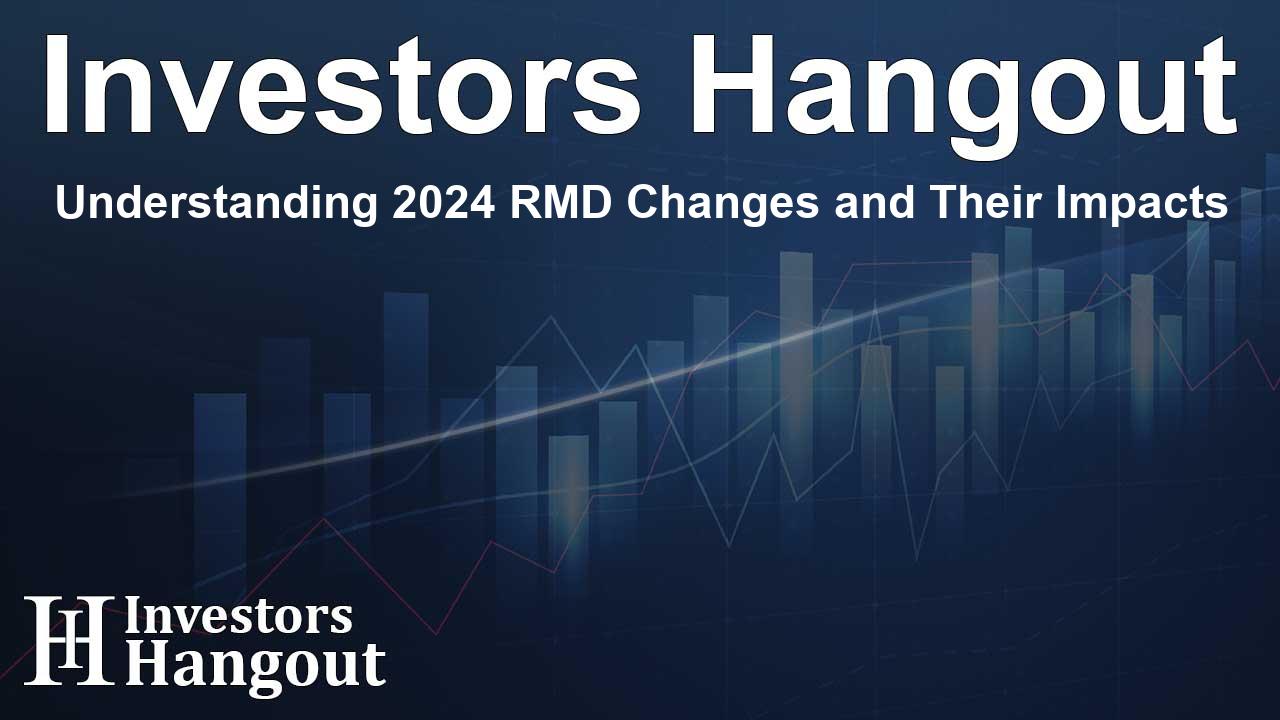Understanding Changes in Required Minimum Distributions
As we step into a new financial landscape, individuals approaching retirement should familiarize themselves with the recent updates related to required minimum distributions (RMDs). A key change is the increase in the RMD age limit, rising from 72 to 73. This adjustment allows retirees an additional year to allow their savings in traditional IRAs and 401(k)s to grow tax-deferred.
New Age Limit for RMDs
Those born between 1951 and 1959 must begin taking their RMDs by age 73, while individuals born in 1960 or later can postpone their distributions until the age of 75. These changes, stemming from the SECURE 2.0 Act, enhance the opportunity for many account holders to maximize their retirement savings.
The Benefits of Delaying RMDs
Delaying RMDs allows funds to compound without immediate taxation, which can significantly impact your long-term financial stability. Additionally, with a longer wait to access these funds, retirees may find themselves in a better position to manage their overall retirement strategy. This includes not only accumulating wealth but also carefully balancing income streams during retirement.
The Potential Effects on Medicare Premiums
With the rise in taxable income due to RMD withdrawals, retirees may encounter higher Medicare premiums. As your income shifts into a higher tax bracket, your premiums for Medicare Part B and D could increase. This factor makes it essential to plan withdrawals strategically to mitigate these potential escalations in healthcare costs.
Understanding Penalties for Missing RMDs
Failing to take your required minimum distribution can lead to severe penalties. In the past, missing an RMD resulted in a penalty of 50% of the amount not withdrawn. Thankfully, under the new regulation, the penalty is now reduced to 25%. Moreover, if you rectify this oversight within two years, you could reduce this penalty to just 10%. To avoid these costly mistakes, it's wise to ensure you are aware of your RMD deadlines.
How to Avoid Missing RMDs
Consider setting up automatic distributions or marking meaningful dates on your calendar as reminders. These actions can help prevent missing your RMDs and incurring unnecessary penalties.
Charitable Giving as a Tax Strategy
For retirees looking to meet RMD obligations while also minimizing tax impacts, charitable giving can be a strategic option. Individuals over the age of 70½ can make a Qualified Charitable Distribution (QCD) of up to $105,000 from their IRAs without counting it as taxable income. This, in turn, counts towards their RMD.
Maximizing Charitable Contributions
Retirees can further enhance their philanthropic efforts through charitable trusts or gift annuities, allowing them to donate substantial amounts while simultaneously satisfying their RMD requirements. This dual benefit not only supports causes that matter but can also lead to significant tax advantages.
Provisions for Roth 401(k) Beneficiaries
Another critical update effective for 2024 is the exemption of Roth 401(k)s from RMDs. Previously, individuals needed to roll their Roth 401(k) into a Roth IRA to avoid required distributions. Now, account holders can let their investments in both Roth 401(k)s and Roth IRAs grow tax-free without the burden of mandatory withdrawals during their lifetime.
Consulting a Financial Advisor
Given these adjustments to the RMD regulations, collaborating with a financial advisor can be beneficial. They can offer tailored guidance that aligns with your financial goals, ensuring you navigate these changes effectively while maximizing your retirement strategy.
Frequently Asked Questions
What is an RMD?
A Required Minimum Distribution (RMD) is the minimum amount that a retiree must withdraw from their retirement accounts annually once they reach a certain age.
How have the RMD age limits changed?
Starting in 2024, individuals will begin taking RMDs at age 73. Those born after 1960 can postpone RMDs until age 75.
What are the consequences of skipping an RMD?
Missing an RMD can lead to significant penalties, typically a percentage of the due amount. It's now 25% for missing it, with options for reduction if corrected within two years.
Can I donate my RMD to charity?
Yes, individuals over 70½ can make a Qualified Charitable Distribution (QCD) to meet their RMD while excluding that amount from taxable income.
Are Roth 401(k)s subject to RMDs?
No, as of 2024, Roth 401(k)s are no longer subject to RMDs, allowing account holders to keep their money growing without mandatory withdrawals.
About The Author
Contact Riley Hayes privately here. Or send an email with ATTN: Riley Hayes as the subject to contact@investorshangout.com.
About Investors Hangout
Investors Hangout is a leading online stock forum for financial discussion and learning, offering a wide range of free tools and resources. It draws in traders of all levels, who exchange market knowledge, investigate trading tactics, and keep an eye on industry developments in real time. Featuring financial articles, stock message boards, quotes, charts, company profiles, and live news updates. Through cooperative learning and a wealth of informational resources, it helps users from novices creating their first portfolios to experts honing their techniques. Join Investors Hangout today: https://investorshangout.com/
The content of this article is based on factual, publicly available information and does not represent legal, financial, or investment advice. Investors Hangout does not offer financial advice, and the author is not a licensed financial advisor. Consult a qualified advisor before making any financial or investment decisions based on this article. This article should not be considered advice to purchase, sell, or hold any securities or other investments. If any of the material provided here is inaccurate, please contact us for corrections.

